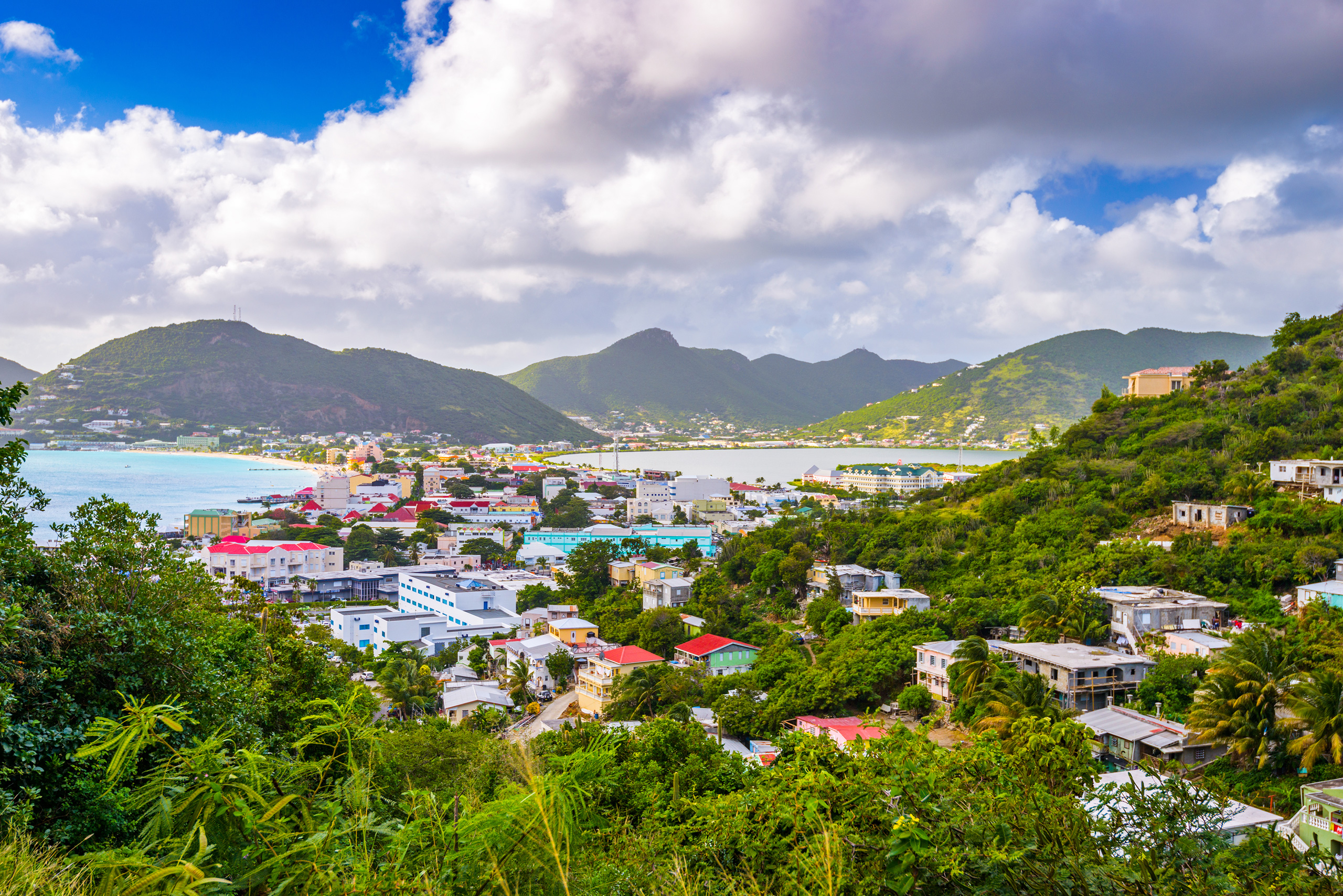Did You Know…?
- This is the smallest island in the world shared by two sovereign governments.
- The Dutch-French pact establishing a shared island is the oldest treaty (1648) in force.
- The area’s Papiamento language is a mixture of Dutch, English and Spanish.
- Residents represent more than 75 nationalities.
- The two sides have coexisted peacefully longer than any other two neighboring nations.
One island, two nations
The two-tone name, St. Maarten/St. Martin, immediately reveals something singular about this island: Long ago, it was split between two colonial powers and so, today, offers the North American tourist access to two European cultures in a uniquely small (37 square miles) space close to home.
The island is noted for its carnivals and, on the French side, the French-influenced cuisine. It is a leading Caribbean sailing venue, with the St. Maarten Heineken Regatta its signature event. The island also is host to key fishing competitions, the Marlin Cup and the St Martin Billfish Tournament.
Geography dictates that the island of St. Maarten/St. Martin shares many characteristics of other sun-and-sand destinations, offering lazy days on sprawling beaches, watery pleasures like snorkeling and scuba diving or invigorating activities like jet skiing, parasailing, windsurfing and more.
The carnivals, as well as other festivals, casinos and nightclubs, promise several types of entertainment appealing to varied tastes. The Dutch Carnival alone encompasses parades, calypso competitions, reggae shows and more than 100 stands serving traditional food. As tourism officials say, no visitor remains a mere observer during the event’s 17 days.
Naturally, expert sailors and anglers take the stage during the big regattas and fishing competitions, but tourists can get a taste of that kind of fun, too. They can crew on vessels in mini-regattas, an option that requires no previous experience as a sailor, and they can try their luck at reeling in a giant marlin or one of the other big ones in the waters around St. Maarten/St. Martin.
Options also include things like hiking into the interior, sightseeing from a mountain bike, visiting museums and a zoo and butterfly farm.
St. Maarten/St. Martin may be two countries, but the border is not much of an issue for tourists: They can pass back and forth, even swim back and forth, without fuss. Also, English is widely spoken and the dollar well accepted on both sides of the border, which means currency exchanges aren’t an issue for U.S. travelers.
Things to do for Venturers
- Windsurf at the Coconut Grove (better for beginners) or Orient Beach beaches on the island’s northeast coast. The best months are from around Christmas until July. Or, try kite surfing for variety.
- Help sail an America’s Cup yacht in the St. Maarten 12-Metre Challenge, offered year-round. Each race lasts two and a half hours. You also can attend a yachting school, but no previous sailing experience is necessary to participate in the short events. Or, register as a crew member on a sailing vessel for one of 28 races that are part of the water sports festival in May in the French side of the island.
- Skim the waters on jet skis, water scooters or wet bikes (like motorcycles on water).
- Scuba to see reefs and the British man-of-war Proselyte, which went down in 1801.
- Sunbathe at the southern and clothing-optional end of Orient Beach.
- Attend a carnival, and you have two to choose from. On the French side, the event occurs before Lent, whereas the Dutch version spans 17 days with its main parade set to coincide with the official birthday of the Dutch Queen Beatrix (April 30). Eat barbequed chicken, Johnny cakes and all sorts of local treats.
Things to do for Centrics
- Hike to the top of Mount Concordia, on the border at the center of the island, where the treaty dividing the island was signed in 1648.
- Rent a boat any time of year for a day of deep-sea fishing; bareboat charters are available.
- Snorkel off Dawn Beach, Little Bay Beach or Maho Bay. Take scuba diving lessons.
- Attend a barbeque on the beach with a steel drum band providing background music.
- Attend a Tuesday Harmony Night street festival which combines the music of brass bands and West Indian orchestras with a kind of craft fair where local artists exhibit and sell their work. This is a January-to-May option.
- Take advantage of French influences on cuisine and enjoy fine dining opportunities.
Things to do for Authentics
- Try the local guavaberry as food — in a dessert tart — or as an alcoholic drink. The guavaberry is a wild local berry found in the hills at the center of the island.
- Tee off at the Mullet Bay Golf Course. Top off the day at one of the island’s 12 casinos (all on the Dutch side).
- Make your first visit by cruise ship and take advantage of the duty-free shopping in Phillipsburg, the capital of St. Maarten.
- Stay in a time-share facility, a particularly attractive option if traveling with a family.
- Ride horseback along the coast and wind up the ride by wading, with your horse, into the sea.
- Learn a few secrets of rum production and coffee roasting at the Mont Vernon Plantation. And, early in the day, see butterflies emerge from their chrysalides and take their first flights, at the Butterfly Farm.
Additional Resources
For more information, consult the St. Maarten/St. Martin Tourism Bureaus at https://www.vacationstmaarten.com and www.st-martin.org

